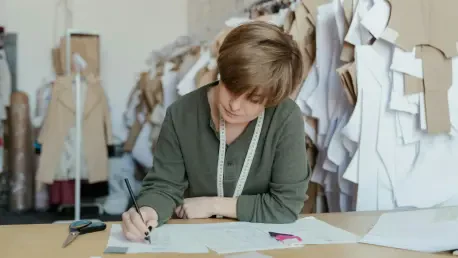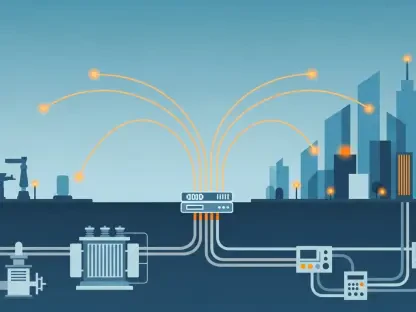The padding adhesive market is emerging as a vital segment within the expansive adhesive industry, playing a critical role in transforming fabric properties through specialized bonding techniques. These adhesives are indispensable in the textile sector, where they enhance durability, smoothness, and resistance to wear, while also finding applications in diverse fields such as paper processing, packaging, automotive interiors, and construction. With a market valuation of USD 3,400 million in 2024 and a projected leap to USD 5 billion by 2035, the industry is on a robust growth path. This analysis delves into the underlying forces propelling this expansion, from surging demand across multiple sectors to groundbreaking trends that are reshaping the landscape. As industries evolve and consumer needs shift, understanding these dynamics becomes essential for stakeholders aiming to capitalize on the market’s potential.
Market Dynamics and Growth Projections
Current State and Future Outlook
The padding adhesive market stands at a significant juncture, with its valuation pegged at USD 3,400 million in 2024 and forecasts indicating a rise to USD 5 billion by 2035, reflecting a steady compound annual growth rate (CAGR) of 3.7% from 2025 onward. This consistent upward trajectory is underpinned by escalating demand across a spectrum of industries, with textiles leading the charge as the primary consumer. The growth is not merely a numbers game; it signifies a deeper shift in industrial needs, where enhanced fabric quality and durability are becoming non-negotiable. Urbanization and rising disposable incomes globally are further amplifying this trend, as consumers increasingly prioritize aesthetically pleasing and long-lasting products in fashion and home furnishings. The market’s ability to adapt to these demands while expanding its footprint into other sectors highlights its resilience and long-term promise for sustained expansion over the coming decade.
Beyond the headline figures, the market’s outlook is shaped by a confluence of macroeconomic and sector-specific factors that fuel its momentum. The burgeoning middle class in developing regions is driving consumption of high-quality textiles, which in turn boosts the need for reliable padding adhesives to meet stringent performance standards. Additionally, the home furnishing sector is witnessing a revival, with consumers investing in durable and visually appealing products that rely on advanced adhesive solutions for their finishing touches. This intersection of economic growth and evolving consumer preferences creates a fertile ground for the market to thrive. As industries continue to innovate and diversify their offerings, the adhesive segment is poised to play a pivotal role in enabling these advancements, ensuring that its growth remains steady and aligned with broader industrial trends through 2035.
Regional Variations and Economic Impacts
Geographically, the market exhibits distinct patterns that underscore varying growth dynamics across regions. Asia-Pacific is emerging as the frontrunner, expected to register the fastest expansion due to its robust textile industry, rapid industrialization, and increasing adoption of technical fabrics. Countries in this region are becoming manufacturing powerhouses, further driving demand for adhesives that support large-scale production. In contrast, mature markets like North America and Europe are focusing on high-performance and sustainable adhesive solutions, spurred by stringent environmental regulations and a consumer base that prioritizes eco-conscious products. These regional disparities highlight the market’s adaptability, as it caters to diverse needs ranging from mass production to specialized, environmentally friendly applications.
The economic ripple effects of this market’s growth are substantial, influencing not just adhesive manufacturers but also related industries. In regions with strong textile bases, the demand for padding adhesives supports job creation and infrastructure development, while fostering innovation in related chemical and material sectors. Meanwhile, in markets emphasizing sustainability, investments in research and development for greener alternatives are stimulating technological advancements that could redefine industry standards. The interplay between regional economic conditions and market demands creates a complex but opportunity-rich environment. As the market progresses toward its projected valuation by 2035, these regional nuances will continue to shape its trajectory, offering tailored growth pathways for stakeholders to explore and leverage.
Key Drivers and Applications
Textile Industry Dominance
Padding adhesives hold a central position in the textile industry, where they are integral to finishing processes that impart critical properties such as wrinkle resistance, water repellency, and enhanced durability to fabrics used in apparel and home textiles. These adhesives enable manufacturers to meet the stringent quality expectations of modern consumers who demand both functionality and aesthetics in their products. As the global textile sector continues to expand, driven by fast fashion trends and the growing popularity of customized home decor, the reliance on such bonding agents becomes even more pronounced. This dominant application area not only anchors the market’s current standing but also sets the stage for future growth as textile production scales up to meet rising global demand over the next decade.
The significance of padding adhesives extends into the realm of industrial textiles, where their role in ensuring fabric integrity under demanding conditions is vital. From outdoor gear that requires weather resistance to upholstery that must withstand heavy use, these adhesives provide the necessary strength and flexibility to elevate product performance. The surge in consumer spending on premium textile products further amplifies this demand, as manufacturers seek to differentiate their offerings through superior quality and innovative finishes. This trend underscores the adhesives’ indispensable contribution to maintaining competitive edges in a crowded marketplace. As the textile industry evolves with new materials and applications, the market for these specialized bonding agents is expected to grow in tandem, reinforcing their pivotal role.
Expanding Industrial Uses
Beyond the textile realm, padding adhesives are gaining traction in a variety of industrial applications, showcasing their versatility as essential bonding and coating solutions. In paper processing, they enhance the structural integrity of products, while in packaging, they ensure durability and reliability under diverse conditions. The automotive sector also benefits, with these adhesives playing a key role in interior components that require robust bonding to endure daily wear and tear. Such cross-industry adoption highlights the market’s ability to transcend its primary domain, tapping into new revenue streams and broadening its impact. This diversification not only mitigates risks associated with over-reliance on a single sector but also positions the market for sustained growth through 2035.
Another promising frontier lies in the realm of nonwoven fabrics, which are increasingly critical in hygiene products, filtration systems, and industrial applications. Padding adhesives are vital for maintaining the cohesion and functionality of these materials, ensuring they meet the rigorous standards of their respective uses. Additionally, the construction industry is beginning to recognize the value of these adhesives in composite materials that demand both strength and flexibility. This expanding scope of applications reflects the market’s adaptability to emerging industrial needs, driven by technological advancements and the quest for innovative solutions. As more sectors discover the benefits of these adhesives, their market presence is set to strengthen, paving the way for broader industrial integration.
Challenges and Opportunities
Barriers to Growth
The padding adhesive market, despite its promising outlook, faces significant hurdles that could temper its expansion. Regulatory compliance stands out as a major challenge, with strict guidelines on chemical usage in textiles and consumer products often restricting the application of certain adhesives due to potential health and environmental risks. These regulations vary across regions, creating a complex compliance landscape that manufacturers must navigate to avoid penalties and maintain market access. Such constraints can stifle innovation and limit the range of products available, posing a persistent barrier to growth as the industry strives to balance performance with safety and sustainability over the forecast period.
Another pressing issue is the volatility of raw material prices, particularly for petrochemical-based polymers that form the backbone of many padding adhesives. Fluctuations in these costs can disrupt production budgets and squeeze profit margins, creating uncertainty for manufacturers. Compounding this challenge is the presence of alternative fabric finishing techniques, such as lamination and enzyme treatments, which offer competing solutions and could erode the market share of traditional adhesives. These alternatives often appeal to industries seeking cost-effective or eco-friendly options, intensifying competition. Addressing these restraints will require strategic planning and adaptability to ensure the market remains robust amidst such external pressures.
Pathways for Expansion
On the flip side, the market is brimming with opportunities that could catalyze further growth. The rise of technical textiles, used extensively in automotive, healthcare, sports, and construction sectors, represents a significant avenue for expansion. Padding adhesives are crucial in imparting essential properties like durability and elasticity to these materials, meeting the high-performance demands of specialized applications. Additionally, the push for sustainability is opening new doors, with growing demand for eco-friendly, water-based, and biodegradable adhesives that align with environmental regulations and consumer preferences. This shift toward greener solutions not only addresses regulatory challenges but also positions companies to capture a larger share of environmentally conscious markets.
Emerging markets in regions like Asia-Pacific, Latin America, and the Middle East also offer substantial growth potential, fueled by rapid industrialization and expanding textile manufacturing activities. These areas are becoming hubs for production, driving demand for reliable adhesive solutions to support large-scale operations. Simultaneously, the increasing use of nonwoven fabrics in hygiene, filtration, and industrial applications presents another promising segment, as these materials rely on adhesives for structural integrity and performance. Capitalizing on these opportunities will require targeted investments and innovation to meet the unique needs of diverse markets. As the industry looks toward 2035, leveraging these pathways could significantly enhance the market’s global footprint and resilience.
Emerging Trends and Future Horizons
Sustainability as a Market Shaper
A defining trend in the padding adhesive market is the accelerating shift toward sustainability, driven by heightened environmental awareness among consumers and stringent regulatory frameworks. Manufacturers are increasingly prioritizing the development of water-based and biodegradable adhesives that minimize ecological impact while maintaining high performance. This focus not only ensures compliance with global standards but also resonates with a growing consumer base that values green products. The transition to such eco-friendly options is reshaping product portfolios, pushing companies to invest in research and development to stay competitive. As this trend gains momentum, it is likely to redefine industry benchmarks, making sustainability a cornerstone of market strategy through the coming years.
The implications of this sustainable shift extend beyond product innovation to influence supply chains and manufacturing processes. Companies are exploring renewable raw materials and adopting cleaner production techniques to reduce their carbon footprint, aligning with broader environmental goals. This transformation is particularly evident in regions like North America and Europe, where regulatory pressures are strongest, but it is also gaining traction in emerging markets as global awareness rises. The emphasis on eco-conscious solutions is fostering a new era of collaboration between adhesive producers and end-use industries, aiming to create products that balance efficacy with environmental responsibility. This trend promises to be a key driver of market evolution as it approaches 2035.
Technological Innovations and Customization
Technological advancements are another powerful force shaping the future of padding adhesives, with innovations in formulation and application techniques enhancing performance and efficiency. The integration of automation in padding processes, through advanced machinery and precision finishing lines, is reducing waste and improving consistency, which in turn boosts the appeal of these adhesives in high-volume industries. Moreover, the development of customized formulations tailored to specific industrial needs—such as those in automotive interiors or construction composites—is enabling manufacturers to address niche demands with greater accuracy. These technological strides are not just enhancing product capabilities but also driving operational efficiencies across the board.
The rise of functional and high-performance textiles further underscores the importance of innovation, as these materials require adhesives with specialized properties like flame retardancy and stain resistance. Manufacturers are responding by developing cutting-edge solutions that cater to these exacting standards, ensuring their relevance in dynamic markets. Additionally, the growing application of adhesives in nonwoven fabrics for diverse uses, from hygiene products to industrial filters, highlights the need for adaptable and robust bonding agents. As technology continues to evolve, it is expected to unlock new possibilities for the market, reinforcing its growth trajectory. By 2035, such innovations will likely have solidified the industry’s position as a hub of cutting-edge solutions.
Reflecting on Market Potential
Looking back, the padding adhesive market demonstrated remarkable adaptability as it navigated a landscape of evolving industrial demands and regulatory challenges. Its valuation growth from USD 3,400 million in 2024 toward a projected USD 5 billion by 2035, underpinned by a CAGR of 3.7%, reflects the sector’s ability to harness key drivers like textile expansion and industrial diversification. Challenges such as raw material cost volatility and stringent regulations tested the industry’s resilience, yet spurred innovations that ranged from eco-friendly formulations to automated application processes. These efforts ensured that the market remained relevant across textiles, nonwovens, and beyond, cementing its role in multiple sectors.
Moving forward, stakeholders should prioritize strategic investments in sustainable product development and regional expansions to capitalize on emerging opportunities. Focusing on technical textiles and nonwoven applications will be crucial, as will fostering partnerships to drive technological advancements. Addressing regulatory hurdles through proactive compliance and innovation in raw material sourcing can further mitigate risks. As the industry progresses, maintaining a balance between performance and environmental responsibility will be key to sustaining growth and relevance in a competitive global landscape.









